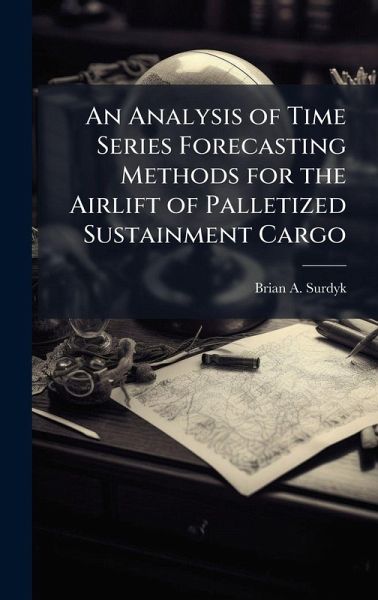
An Analysis of Time Series Forecasting Methods for the Airlift of Palletized Sustainment Cargo
Versandkostenfrei!
Versandfertig in über 4 Wochen
28,99 €
inkl. MwSt.
Weitere Ausgaben:

PAYBACK Punkte
14 °P sammeln!
In the Department of Defense (DOD) supply chain for sustainment cargo, over 45,000 pallets were transloaded at Incirlik AB, Turkey in from April 2008 to December 2009 with ultimate destinations in the USCENTCOM AOR, making Incirlik the largest transshipment node for airlift in the DOD by over two-fold. Current methods of forecasting follow-on transportation requirements are based on the amount of pallets on hand at the aerial port as well as short-term visibility of pallets currently in the channel system destined for Incirlik AB. This process yields a forecast horizon of only 2-3 days for pla...
In the Department of Defense (DOD) supply chain for sustainment cargo, over 45,000 pallets were transloaded at Incirlik AB, Turkey in from April 2008 to December 2009 with ultimate destinations in the USCENTCOM AOR, making Incirlik the largest transshipment node for airlift in the DOD by over two-fold. Current methods of forecasting follow-on transportation requirements are based on the amount of pallets on hand at the aerial port as well as short-term visibility of pallets currently in the channel system destined for Incirlik AB. This process yields a forecast horizon of only 2-3 days for planning subsequent airlift missions. An analysis several time series forecasting methods using post-sample pallet data from the Global Air Transportation Execution System (GATES) was accomplished to examine their ability to forecast different sustainment scenarios at least 7 days in advance of arrival at Incirlik AB, Turkey. This work has been selected by scholars as being culturally important, and is part of the knowledge base of civilization as we know it. This work was reproduced from the original artifact, and remains as true to the original work as possible. Therefore, you will see the original copyright references, library stamps (as most of these works have been housed in our most important libraries around the world), and other notations in the work. This work is in the public domain in the United States of America, and possibly other nations. Within the United States, you may freely copy and distribute this work, as no entity (individual or corporate) has a copyright on the body of the work. As a reproduction of a historical artifact, this work may contain missing or blurred pages, poor pictures, errant marks, etc. Scholars believe, and we concur, that this work is important enough to be preserved, reproduced, and made generally available to the public. We appreciate your support of the preservation process, and thank you for being an important part of keeping this knowledge alive and relevant.












